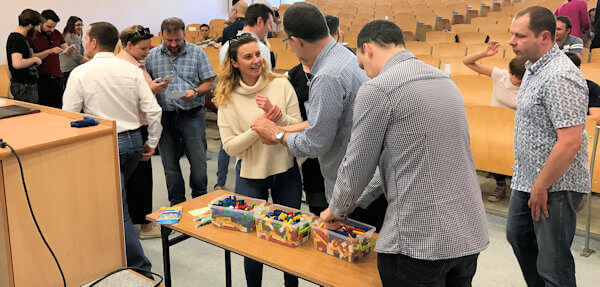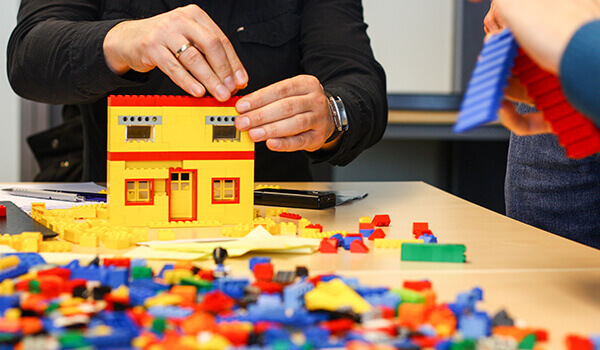One of Larman’s Laws of Organizational Behavior says that “Culture follows structure.” This means that how an organization is structured influences how employees think and behave. If you want to change the culture of a company, you should start by changing its structure.
To show the impact of different organizational designs, we’ve created a fun, hands-on simulation using Lego bricks. Instead of focusing on specific product development methods like Scrum or Waterfall, our simulation demonstrates how organizing a company around component teams versus feature teams affects communication and coordination. This activity is flexible and works well with groups of 20-60 people, taking less than 90 minutes to complete. By playing and actively participating, participants learn more effectively and gain a better understanding of the concepts.

About the Simulation
In this simulation, participants experience what it’s like to work in an organization where both business and development teams are trying to collaborate within set structures. The goal is to build a Lego city by delivering as many Lego buildings as possible, as quickly as possible, following specifications provided by the facilitators. The simulation has three sessions, each showing how different structures impact value delivery and time to market:
- Component teams
- Cross-component teams with single-specialization members
- Cross-component teams with multi-skilled members
To help you run this workshop yourself, we’ve prepared a detailed guide with logistics and key messages for each section. You can dowload it here.
Inspiration and Feedback
This workshop was inspired by the Lego4Scrum simulation by Alexey Krivitsky, which we highly recommend. We’ve conducted this workshop at various Agile conferences and local meetups, and we’re looking forward to improving it with your feedback. Have you tried the simulation? Did you enjoy it?

